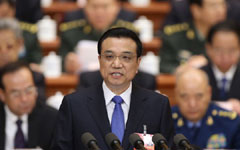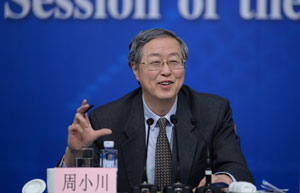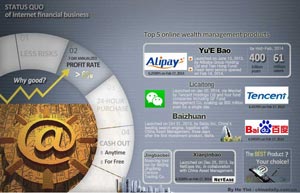Experts calling for more efficient use of financial resources
By Yao Jing (China Daily) Updated: 2014-03-12 07:22With liquidity in China remaining generally abundant, there's renewed discussion about how financial resources can be distributed more efficiently.
 |
|
 |
Zhang, who's also a CPPCC member, said that more should be done to help the real economy gain easier access to financing.
The broad measure of money supply (M2), which covers cash in circulation and all deposits, expanded 13.6 percent to 110.65 trillion yuan ($19 trillion) in 2013, just 0.2 percentage point less than in 2012, according to the central bank.
While keeping macroeconomic policy stable, China made good use of both existing and additional monetary and financial resources, Premier Li Keqiang said in his government report.
As for the future, Guo Qingping, an assistant governor at the People's Bank of China, said the central bank will pay more attention to small and medium-sized enterprises to ensure that financial support is available to assist in the nation's economic transformation.
"Asset securitization is an efficient way to 'energize' the loan process, and we are trying it in the railway sector," said Guo.
"As long-term investments account for a big part of railway spending, we're making it a practice to turn the sector's loans into liquid assets that can be traded on the market," added Guo.
Guo said the central bank will promote asset securitization in more industries.
|
 |
 |
- NHTSA says finds no 'defect trend' in Tesla Model S sedans
- WTO rare earth ruling is unfair
- Amway says 2014 China sales may grow 8%
- President Xi in Europe: Forging deals, boosting business
- CNOOC releases 2013 sustainability report
- Local production by Chery Jaguar Land Rover this year
- Car lovers test their need for speed in BMW Mission 3
- China stocks close mixed Monday

















